- Home
- Our Hotels
- Mumbai
- Our Rooms
- Dining
- Meetings & Events
- Offers & Packages
- Facilities
- Gallery
- Nearby Places
- Contact Hotel
- Chennai
- Our Rooms
- Dining
- Meetings & Events
- Offers & Packages
- Facilities
- Gallery
- Nearby Places
- Contact Hotel
- Aurangabad
- Our Rooms
- Dining
- Weddings & Events
- Offers & Packages
- Facilities
- Gallery
- Nearby Places
- Contact Hotel
- Our Story
- Offers & Packages
- Careers
- Book your stay
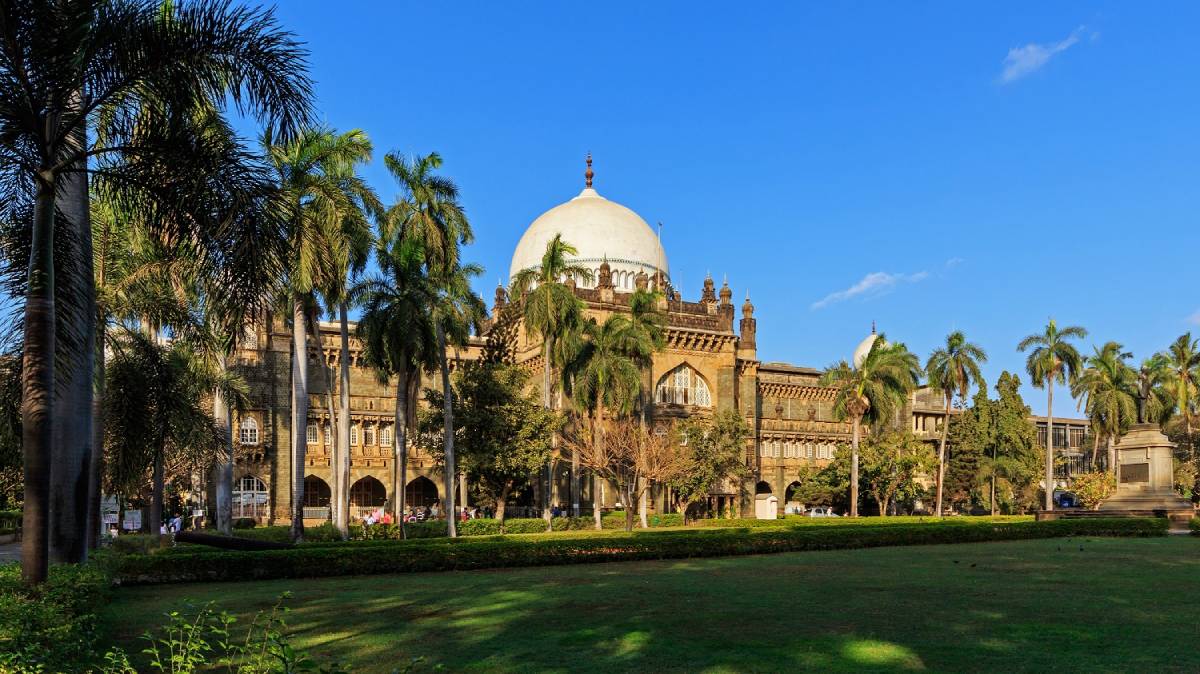
Nearby Places to Visit
Hotel near Haji Ali Dargah

Marine Drive
Marine Drive is a 3.6-kilometer-long boulevard in South Mumbai in the city of Mumbai. The road was constructed by late philanthropist Bhagojisheth Keer & Pallonji Mistry. It is a ‘C’-shaped six-lane concrete road along the coast, which is a natural bay. The road links Nariman Point to Babulnath and Malabar Hill. Marine Drive is situated over reclaimed land facing west-south-west. A promenade lies parallel to this road. Marine Drive is also known as the Queen’s Necklace because, if viewed at night from an elevated point anywhere along the drive, the street lights resemble a string of pearls in a necklace.
The Gateway of India
The Gateway of India is an arch monument built during the 20th century in Bombay, India. The monument was erected to commemorate the landing of King George V and Queen Mary at Apollo Bunder on their visit to India in 1911. The Gateway of India is located on the waterfront at the Apollo Bunder area at the end of Chhatrapati Shivaji Marg in South Mumbai and overlooks the Arabian Sea. The construction of the monument was completed in 1924. The Gateway was later used as a symbolic ceremonial entrance to India for Viceroys and the new Governors of Bombay. It served to allow entry and access to India.
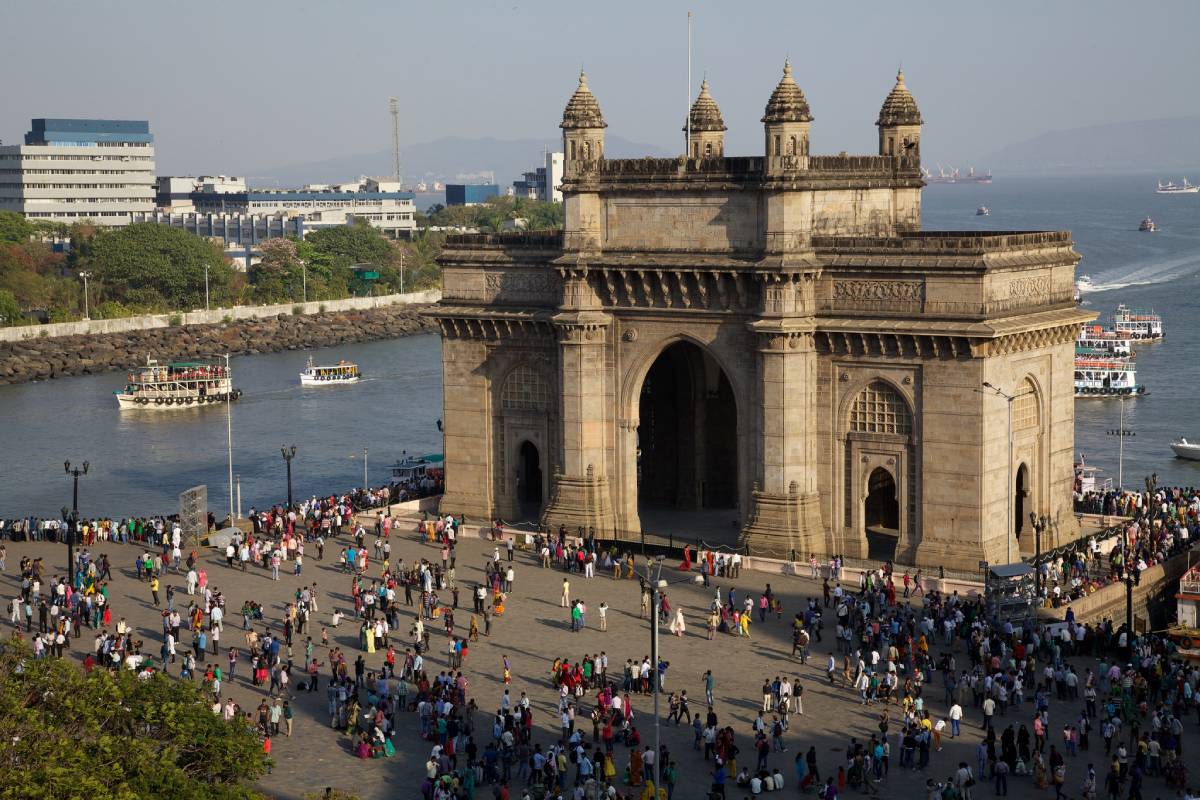
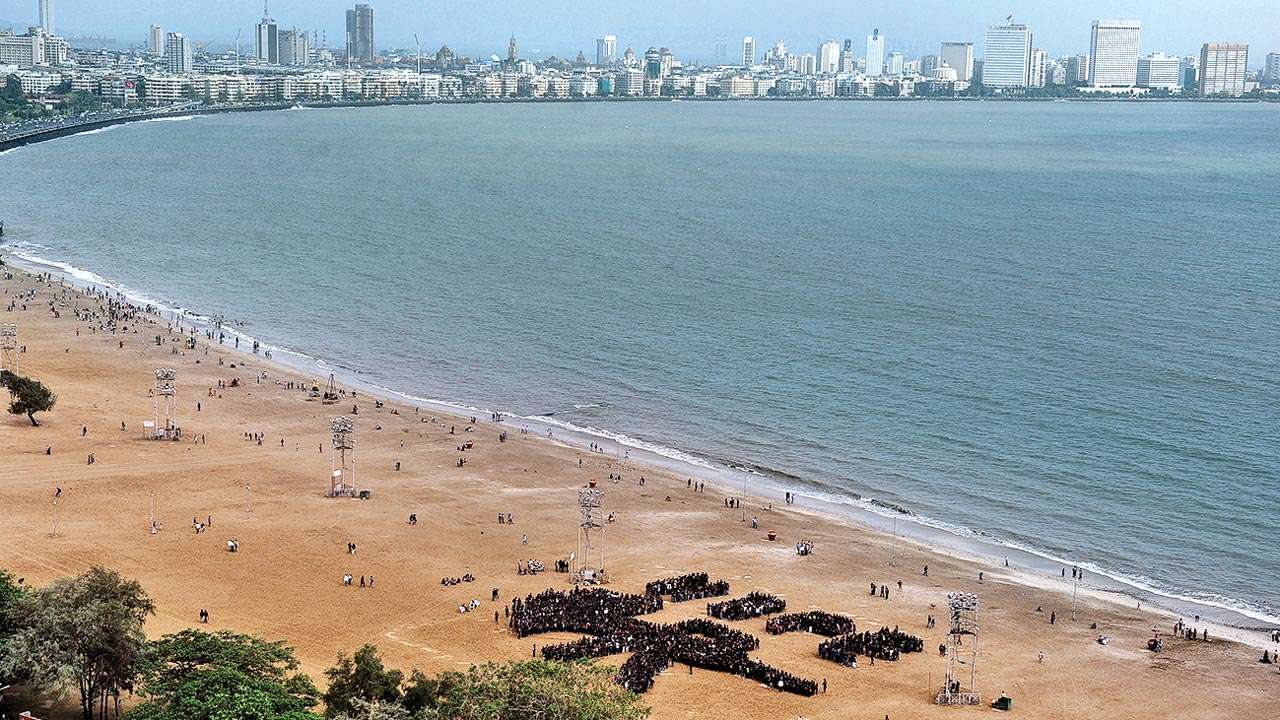
Chowpatty Beach
Chowpatty beach is a public beach along the Queen’s Necklace adjoining Marine Drive in the Girgaon area of Mumbai, India. It is served by the Charni Road railway station. The beach is noted for its Ganesh Visarjan celebrations when thousands of people from all over Mumbai and Pune come to immerse the idols of Lord Ganesh in the Arabian Sea. It is also one of the many places in the city where the ‘Ram Leela’ play is performed on stage every year. An effigy of Ravan erected on the sand is burnt at the end of the 10-day performance.
Elephanta Caves
Elephanta Caves are a UNESCO World Heritage Site and a collection of cave temples predominantly dedicated to the Hindu god Shiva. They are on Elephanta Island, or Gharapuri (“the city of caves”), in Mumbai Harbour, 10 kilometers east of Mumbai in the Indian state of Mahārāshtra. The island, about 2 kilometers (1.2 mi) west of the Jawaharlal Nehru Port, consists of five Hindu caves and a few Buddhist stupa mounds that date back to the 2nd century BCE, as well as a small group of two Buddhist caves with water tanks.
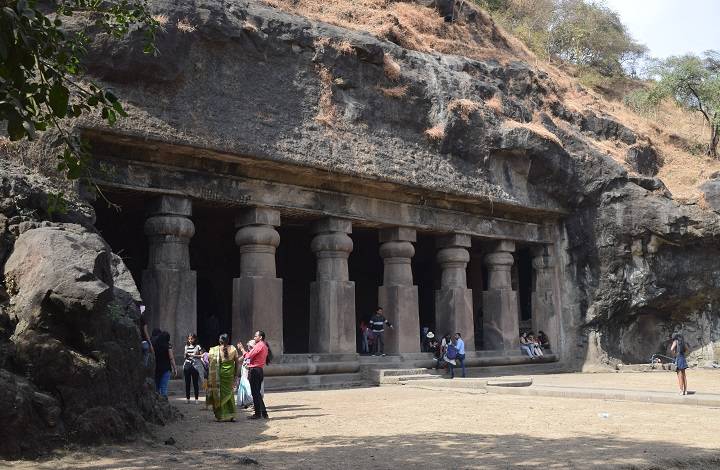

The Haji Ali Dargah
The Haji Ali Dargah is a mosque and dargah located on an islet off the coast of Worli in the southern part of Mumbai. Near the heart of the city proper, the dargah is one of the most recognizable landmarks of Mumbai. It was constructed in 1431 in memory of a wealthy Muslim merchant, Sayyed Peer Haji Ali Shah Bukhari, who gave up all his worldly possessions before making a pilgrimage to Mecca. Hailing from Bukhara, in present-day Uzbekistan, Bukhari traveled around the world in the early to mid 15th century and eventually settled in present-day Mumbai.
Jehangir Art Gallery
Jehangir Art Gallery is an art gallery in Mumbai (India). It was founded by Sir Cowasji Jehangir at the urging of K. K. Hebbar and Homi Bhabha. It was built in 1952. Managed by the Committee of Management, the entire cost of this mansion was donated by Cowasji Jehangir. This gallery is situated at Kala Ghoda, behind the Prince of Wales Museum, in South Mumbai near the Gateway of India, and has four exhibition halls. The gallery was designed by G.M.Bhuta for G.M. Bhuta & Associates. The gallery was inaugurated on 21 January 1952, by then Chief Minister of Bombay State, B. G. Kher dedicated it to the memory of Sir Cowasji’s late son, Jehangir. A mammoth institution in itself, its history is linked with the renaissance of Indian art.
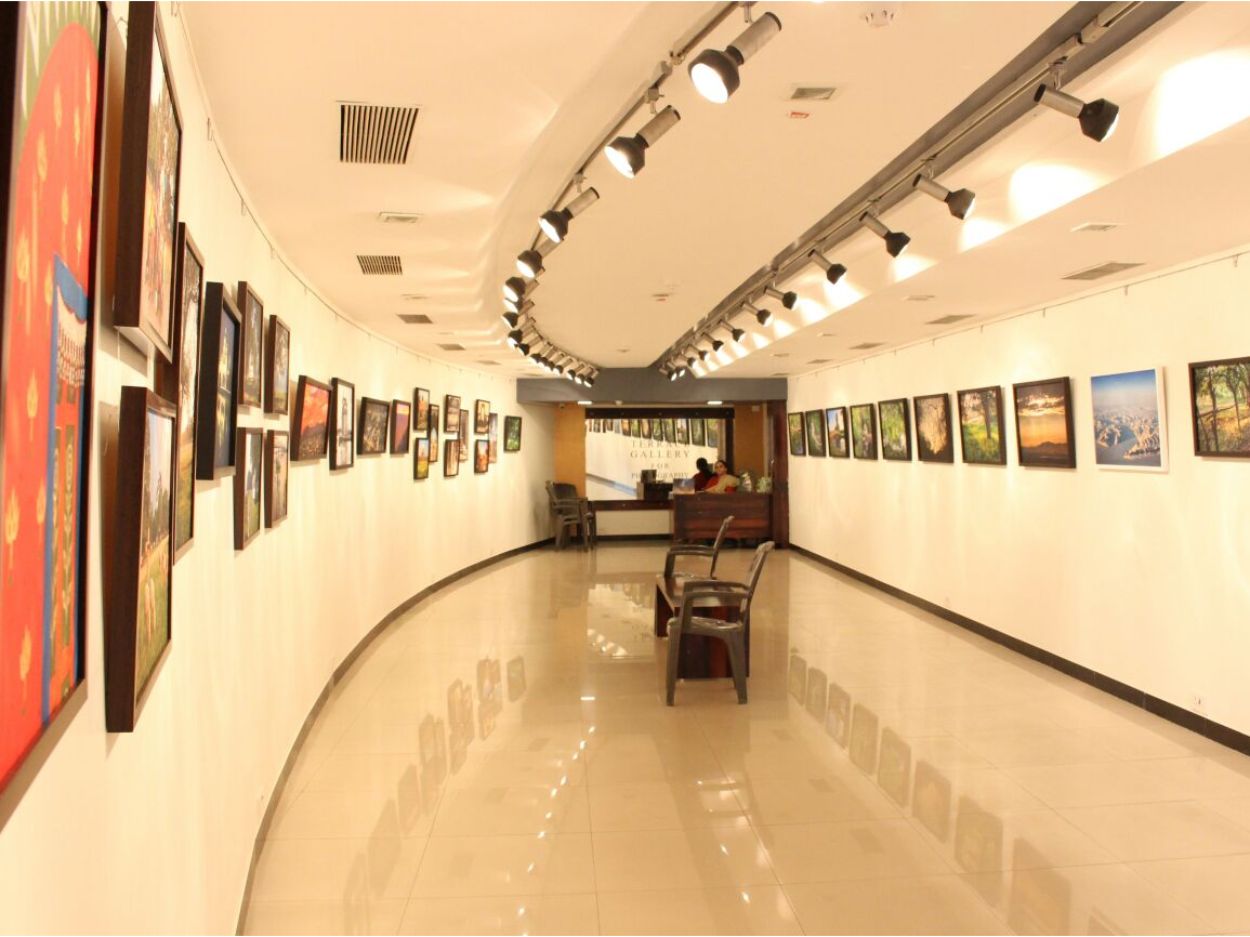
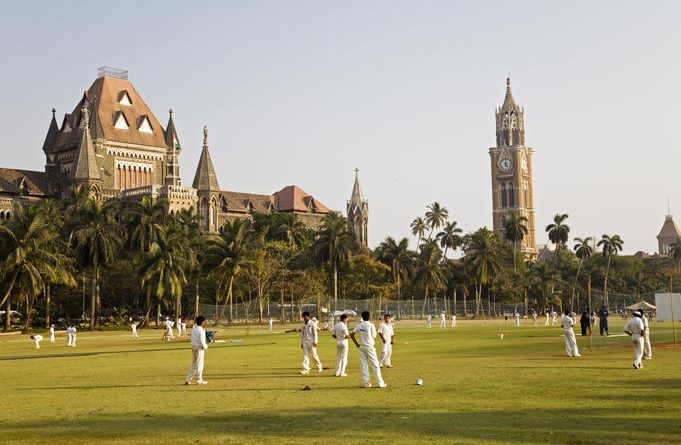
Rajabai Clock Tower
The Rajabai Clock Tower was designed by Sir George Gilbert Scott, an English architect. He modeled it on Big Ben in London. The foundation stone was laid on 1 March 1869 and construction was completed in November 1878. The total cost of construction came to 550,000, a large amount of money for the period. A portion of the total cost of construction was donated by Premchand Roychand, a prosperous broker who founded the Bombay Stock Exchange on the condition that the tower is named after his mother Rajabai.
Chhatrapati Shivaji Maharaj Vastu Sangrahalaya
The Chhatrapati Shivaji Maharaj Vastu Sangrahalaya, abbreviated CSMVS and formerly named the Prince of Wales Museum of Western India, is the main museum in Mumbai, Maharashtra. It was founded in the early years of the 20th century by prominent citizens of Mumbai, with the help of the government, to commemorate the visit of George V, who was Prince of Wales at the time. It is located in the heart of South Mumbai near the Gateway of India. The museum was renamed in 1998 after Chhatrapati Shivaji Maharaj, the founder of the Maratha Empire.

The Ambassador Hotel, Near Marine Drive, V.N. Road, Churchgate, Mumbai – 400020
Email:- res.mum@ambassadorindia.com
Phone:- +91 02222041131







